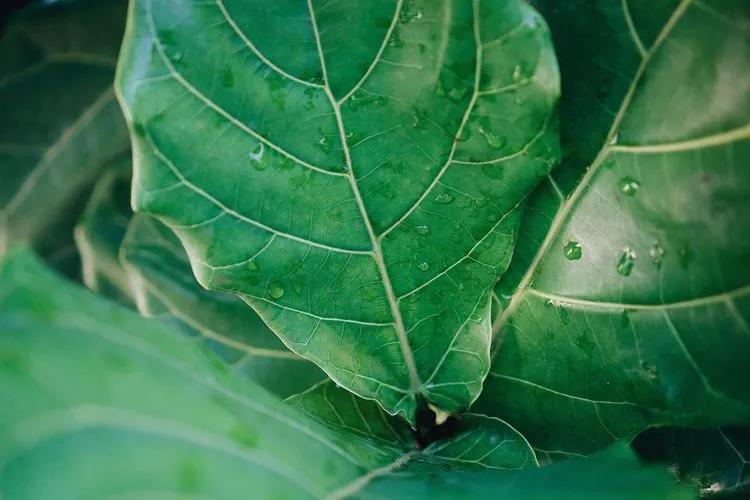What’s Wrong With My Fiddle? Symptoms & Signs of an Unhealthy Plant
Fiddle-leaf figs look amazing when they’re healthy, but even these beauties have bad days. If you’ve got an unhealthy fiddle leaf fig, the signs usually show up fast – yellowing leaves, crispy brown edges, droopy stems, or spots that weren’t there last week. In this article, we’ll go through the things to watch for so you can figure out what’s wrong and help your plant bounce back.

Yellow Leaves
It’s one of the most common problems with fiddles, so there are a lot of various reasons why the leaves become yellowish. First of all, it might point that there is not enough sunlight. Ideally, you should place the fiddle where it can get indirect diffused bright light.
Paradoxically, not only lack of sunlight but too much of it also can be harmful, because fiddle can get a sunburn. That’s another reason why its leaves can change the color to yellow. By the way, sunburn is easy to notice because only the top leaves will be damaged by the sun. The worst part is that you should cut off the injured leaves because they won’t recover. Thus, it is better to prevent the issue and not place your fig in direct sunlight.
Also, yellow leaves indicate that the plant is overwatered. If the leaves are getting yellow and wilt, but the tissue itself is limp and soft, the fig is overwatered. Keep in mind that this is a tropical plant, so you should water it only when the top inches of soil are completely dry.
Pay attention to the soil itself because it can also cause leaves to turn yellowish when it’s acidic. So take care of the state of the soil and use an adequate amount of fertilizers as lack of them is the final reason for the change of color.

White Spots
Hard water is the main reason why white spots appear on the fiddle-leaf fig. For example, tap water can contain chlorine, sodium, and other harmful substances. These minerals can make the surface of the leaves look white and pale. But that’s not all; they also weaken the plant as they don’t allow it to absorb water nutrients fully. The best solution for this problem is to stop watering your plant with tap water. Instead, you can use a filtered one. Tap water can be softened by just letting it sit for at least 1-2 days. This will reduce the amount of harmful minerals; however, choosing filtered or spring water is still a better choice.
Fungal disease, mostly powdery mildew, can be another reason for white spots. Fungi can appear as a result of bad air circulation. Fungus makes your plant weak and creates a favorable environment for pests. The best solution to this problem is cutting affected leaves. If not identified timely, it can lead to a bunch of diseases. The most common pests are spider mites and mealybugs. It’s not that easy to notice spider mites, but when you see a whitish tint on the leaf - that’s it!
Don’t panic: the neem oil and water are your biggest helpers. Mix them and spray all the parts of the plant with this solution. The procedure should be repeated several times with an interval of 4-5 days. When it comes to mealy bugs, the solution is similar; you should isolate the plant, prune the affected leaves and use the neem oil.
Black or Brown Spots
Spots of these colors are signs that the plant is being underwatered. Leaves that turned brown due to dryness are easy to diagnose as it makes them curl. Optimal humidity for fig should range from 30 to 60%, keep an eye on it to improve the situation. Also, don’t forget to water the plant regularly.
Sometimes one consequence can be caused by completely polar reasons, so overwatering can also cause the change of leaves' color. Too much water can be the reason for root rotting. You should provide a proper drainage for your fiddle to avoid this problem. Also, we recommend choosing fast-draining soil.
Another reason why your fiddle’s leaves are turning dark is a bacterial infection. In the case of infection, spots are rather black rather than brown. Also, infection attacks not only the old leaves but new ones.

Final Thoughts
Hope this information will help you in the timely identification of the problem. If you see even the slightest changes in the appearance of your plant, do not neglect them! Each of the described issues can be easily overcome at early stages with minimal harm for your fig.
